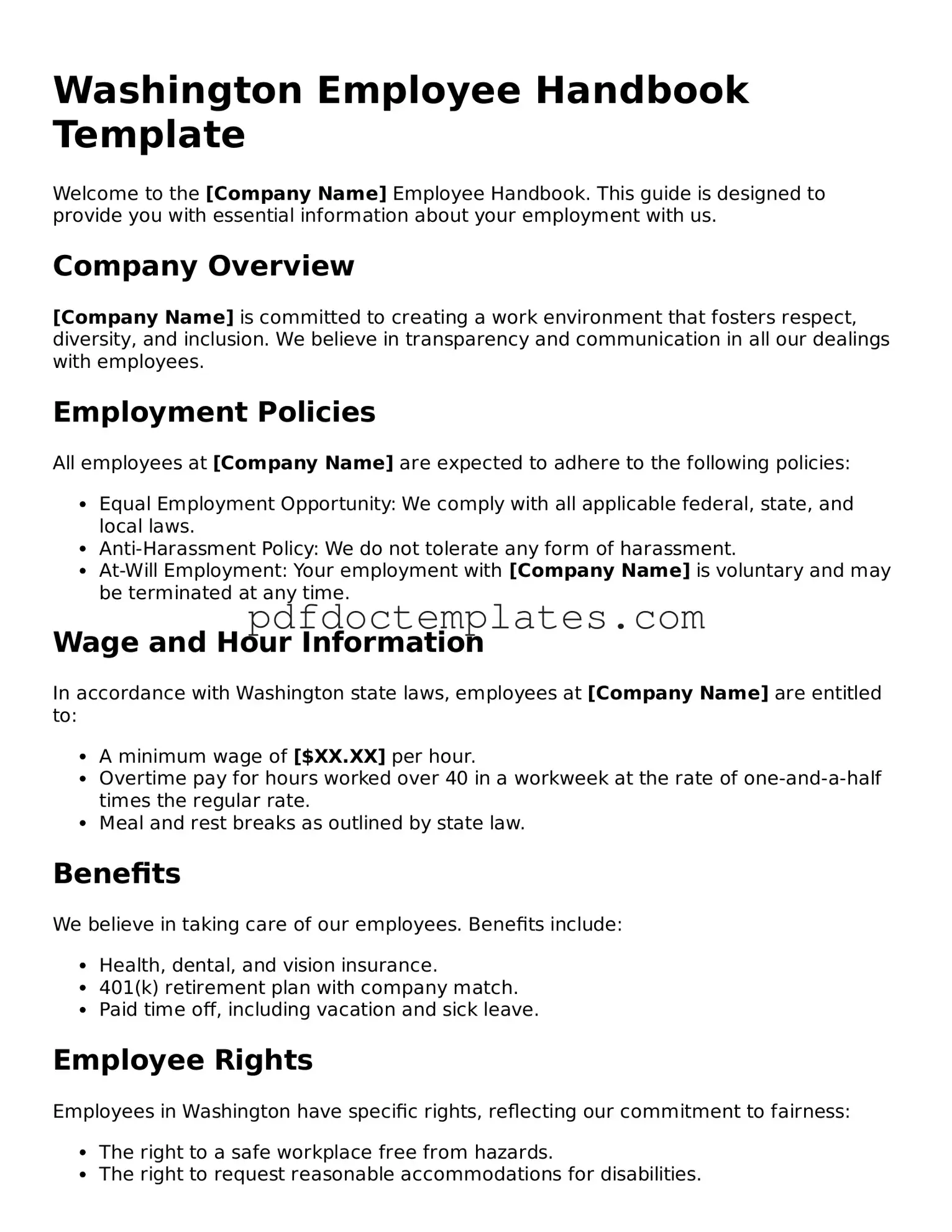Washington Employee Handbook Template
Welcome to the [Company Name] Employee Handbook. This guide is designed to provide you with essential information about your employment with us.
Company Overview
[Company Name] is committed to creating a work environment that fosters respect, diversity, and inclusion. We believe in transparency and communication in all our dealings with employees.
Employment Policies
All employees at [Company Name] are expected to adhere to the following policies:
- Equal Employment Opportunity: We comply with all applicable federal, state, and local laws.
- Anti-Harassment Policy: We do not tolerate any form of harassment.
- At-Will Employment: Your employment with [Company Name] is voluntary and may be terminated at any time.
Wage and Hour Information
In accordance with Washington state laws, employees at [Company Name] are entitled to:
- A minimum wage of [$XX.XX] per hour.
- Overtime pay for hours worked over 40 in a workweek at the rate of one-and-a-half times the regular rate.
- Meal and rest breaks as outlined by state law.
Benefits
We believe in taking care of our employees. Benefits include:
- Health, dental, and vision insurance.
- 401(k) retirement plan with company match.
- Paid time off, including vacation and sick leave.
Employee Rights
Employees in Washington have specific rights, reflecting our commitment to fairness:
- The right to a safe workplace free from hazards.
- The right to request reasonable accommodations for disabilities.
- The right to participate in union activities if desired.
Compliance with State Laws
This handbook complies with Washington state laws governing employee relations. For more information, please refer to:
- Washington State Department of Labor and Industries.
- Washington State Human Rights Commission.
- Washington Administrative Code (WAC).
Acknowledgment
By signing below, you acknowledge that you have received and understood the [Company Name] Employee Handbook.
Employee Name: [____________________]
Employee Signature: [____________________]
Date: [____________________]
